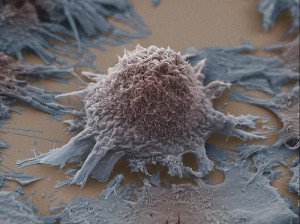SUNDAY, 5 SEPTEMBER 2010
Lysosomes are cell organelles that, among other functions, act as waste processors responsible for breaking up cellular debris. They have been linked to many fatal diseases, including types of cancer and genetic disorders such as Tay Sachs. The study of the biological behaviour of lysosomes is therefore imperative in order to understand and combat these diseases.Existing commercial probes designed for this purpose involve the use of dyes to fluorescently label lysosomes to track their movements; however, high frequency light is required in order to view them. Consequently, they cannot penetrate deep tissue, are sensitive to pH levels and have poor water solubility. As a result, they can only be used for minutes at a time.
A group at the University of Central Florida has developed a new probe that uses a novel dye which can be seen in infrared light. It has lower frequency and hence allows more deeply penetrating and stable imaging. This has allowed them to take reliable images for hours, and has been adapted to selectively identify certain lysosomes that are found in tumours. This holds particular promise for researchers hoping to understand the role of these lysosomes in diseases such as cancer, so that the probe could eventually help doctors diagnose and treat tumours in the future.
The findings have been published in this month's Journal of the American Chemical Society [1].
Written by Katy Wei

